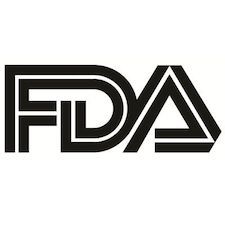Article
FDA Accepts NDA for Avacincaptad Pegol for Treatment of Geographic Atrophy
Author(s):
The NDA has been granted Priority Review with a PDUFA goal date of August 19, 2023. The FDA is not currently planning to hold an Advisory Committee meeting.

The US Food and Drug Administration (FDA) has accepted the New Drug Application (NDA) for Iveric Bio’s avacincaptad pegol, a novel investigational complement C5 inhibitor for the treatment of geographic atrophy (GA) secondary to age-related macular degeneration (AMD).1
The NDA has been granted Priority Review with a Prescription Drug User Fee Act (PDUFA) goal date of August 19, 2023. At this time, the FDA has not identified any potential review issues and is not currently planning to hold an Advisory Committee meeting for the therapy, according to the news release.
“The FDA’s acceptance of our NDA and Priority Review for avacincaptad pegol brings us another significant step closer to delivering a much-needed treatment to AMD patients living with GA,” said Glenn P. Sblendorio, Chief Executive Officer of Iveric Bio in the release.1 “We look forward to continuing our collaboration with the FDA throughout the review process.”
The release indicated avacincaptad pegol is the first and only investigational therapy to receive Breakthrough Therapy designation for GA secondary to AMD. Overactivity of the complement system and the C5 protein are believed to play an important role in the development and growth of scarring and vision loss associated with GA secondary to AMD. By targeting C5, the therapy could have the potential to decrease the activity of the complement system and potentially slow the progression of GA.
Iveric Bio’s NDA submission was based on the 12-month pre-specified primary efficacy and safety results from the GATHER1 and GATHER2 clinical trials. According to the release, avacincaptad pegol is the only investigational product for the treatment of GA to achieve the pre-specified 12-month primary endpoint in two phase 3 pivotal clinical trials, with observed efficacy rates up to 35%.
These clinical trials evaluated the safety and efficacy of monthly 2 mg intravitreal administration of avacincaptad pegol in patients with GA secondary to AMD. There were 286 participants enrolled in the completed GATHER1 clinical trial and 448 participants enrolled in the ongoing GATHER2 trial. Both studies’ primary efficacy endpoints were based on GA area measured by fundus autofluorescence at baseline, month 6, and month 12.
The findings suggest the mean rate of growth (slope) in GA area from baseline to month 12 using observed data was 35% in GATHER1 and 18% in GATHER2. In both trials, the most frequently reported treatment-emergent adverse events in the 2mg recommended dose were related to the injection procedure.
The most common adverse reactions reported in individuals who received avacincaptad pegol 2 mg were conjunctival hemorrhage (13%), increase intraocular pressure (9%), and choroidal neovascularization (7%). After GATHER1’s 18 months of treatment and GATHER2’s 12 months of treatment, there were no events of serious intraocular inflammation, vasculitis, or endophthalmitis.
“We believe our Special Protocol Assessment for GATHER2, rolling review, Breakthrough Therapy designation and now Priority Review underscore the strength of our GATHER1 and GATHER2 results,” said Pravin U. Dugel, President of Iveric Bio in the release.1 “We continue to accelerate our commercial launch plans and prepare for a potential approval of avacincaptad pegol for the treatment of GA throughout the AMD disease continuum. This is important because AMD leads to irreversible, and in many cases catastrophic, vision loss.”
References
- Iveric Bio announces FDA accepts New Drug Application and grants priority review for AVACINCAPTAD Pegol for the treatment of geographic atrophy. Business Wire. https://www.businesswire.com/news/home/20230216005773/en/Iveric-Bio-Announces-FDA-Accepts-New-Drug-Application-and-Grants-Priority-Review-for-Avacincaptad-Pegol-for-the-Treatment-of-Geographic-Atrophy. Published February 16, 2023.





